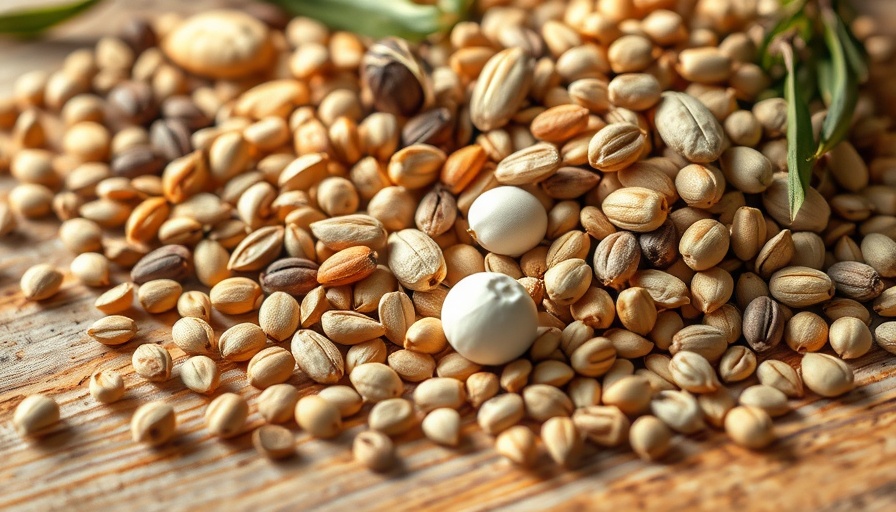
Understanding Seed Cycling: A Path to Hormonal Wellness
In a world increasingly focused on holistic health and wellness, seed cycling has emerged as a natural alternative for managing hormonal balance, especially among women. Traditionally, hormonal imbalances can lead to a plethora of health issues ranging from menstrual irregularities to conditions like polycystic ovary syndrome (PCOS). But what if by simply incorporating specific seeds into your diet, you could promote hormonal equilibrium? This is the essence of seed cycling.
The Phases of Seed Cycling Explained
Seed cycling divides a woman's menstrual cycle into two significant phases — the follicular and luteal phases. The first phase begins on day one of menstruation and lasts for about 14 days. Here, dieters incorporate pumpkin and flax seeds into their meals — each providing essential nutrients like zinc and omega-3 fatty acids, which are known to support estrogen production. This dietary choice prepares the body for optimal progesterone secretion in the following phase.
The luteal phase, beginning on day 14, lasts until the onset of the next cycle. During this time, women switch to consuming chia and sunflower seeds. These seeds are touted for their ability to stimulate the production of key hormones such as luteinizing hormone (LH) and follicle-stimulating hormone (FSH), necessary for regulating menstrual cycles.
The Science Behind Seed Cycling
Recent studies have shown that the combined effect of seeds like pumpkin, sunflower, chia, and flax can rival conventional treatments for conditions such as PCOS. These seeds, rich in essential nutrients, may not only regulate hormones but also contribute to overall well-being by potentially alleviating conditions associated with hormonal imbalance. For instance, a study published in Food, Science & Nutrition highlighted the competency of these seeds in promoting hormonal health, confirming their therapeutic potential.
Benefits Beyond Hormonal Balance
But the benefits of seed cycling extend far beyond just menstrual health. Women incorporating these seeds into their diets may experience an array of positive effects, including improved skin health, better metabolism, and a more regulated mood due to stable hormone levels. The regular intake of these nutrient-dense seeds can also contribute to sustained energy levels and support digestive health, showcasing how simple dietary adjustments can lead to comprehensive wellness.
The Measurable Impact on Lifestyle
Adopting a seed cycling regimen can also be a mindful practice, blending nutrition with self-care. Not only does each seed offer unique hormonal benefits, but they also create an opportunity for individuals to engage more intentionally with their food choices. This holistic approach contributes to a sustainable lifestyle focused on prioritizing health.
Getting Started with Seed Cycling
For those looking to introduce seed cycling into their routines, consult with a qualified dietitian to tailor the plan to individual needs. Emphasizing the importance of portion control, it's generally recommended to consume one teaspoon of each seed type during the designated cycling periods for optimal effects. Keeping a journal to track changes in wellbeing can further enhance the seed cycling experience.
Conclusion: Embrace the Seeds of Change
Seed cycling presents an exciting method for achieving hormonal balance naturally. Whether you are struggling with menstrual health issues or simply looking to enhance your overall vitality, the simple addition of classic seeds like pumpkin, sunflower, chia, and flax to your daily diet might offer noticeable benefits. As the journey toward better health unfolds, take a small yet significant step today by integrating these nutritional powerhouses into your meals!
 Add Row
Add Row  Add
Add 




Write A Comment